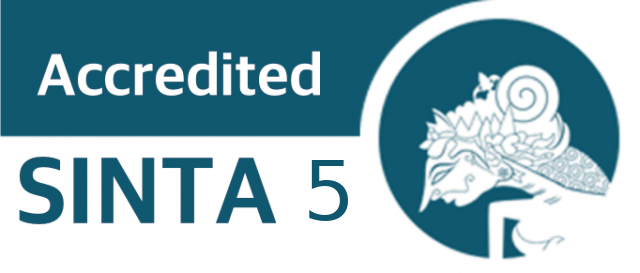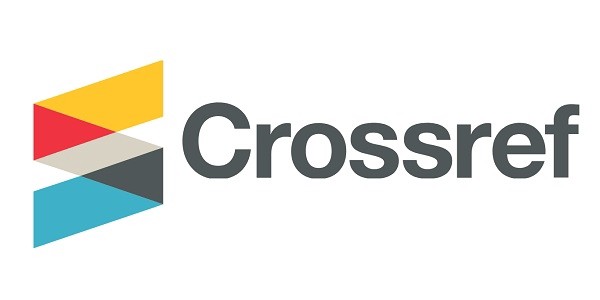LITERATURE REVIEW : PERBANDINGAN EFEKTIVITAS EKSTRAK PEPAYA (Carica papaya L.) SEBAGAI LARVASIDA ALAMI TERHADAP LARVA Aedes aegypti INSTAR III DAN IV
DOI:
https://doi.org/10.37304/jkupr.v10i2.7455Keywords:
Larvicide, Carica papaya L, Aedes aegyptiAbstract
Based on the types, DENV 2 and DENV 3 are the types of dengue found in Indonesia, but the dominant one is DENV 3 because this type of virus causes severe cases of dengue. The papaya plant is a highly potent plant of natural larvicide. The literature review to compare the effectiveness of the papaya (Carica papaya L.) of each concentration, LC50 and LC90 againts the death toll of Aedes aegypti mosquito larvae. The study uses a Systematic Literature Review, the sourse of the data used in this study is secondary data obtained from experimental research journals and retrieved from websites Google Scholar. The journal received was 10 national journals and 5 international journals. Ten journals using papaya leaf ethanol extract, 1 journal using papaya leaf filtrate, 1 journal papaya leaf juice, 1 journal papaya sead ethanol extract, 1 journal papaya sead and leaf ethanol extract, as well as ethanol extract of seed, leaf, bark, and papaya root 1 journal. Researchers on average use more papaya leaf compared to other parts of the papaya plant and each method of precessing and concentration is different for each journal. There are 14 journals that say that the higher the concentration is used, the more the larvae are Ae. aegypti was killed, where as 1 journal says that the lower the concentration, the more toxic the larvae will get Ae. aegypti.
Downloads
References
Hernandes LM, Diego FD, David AB, Carlos AG, Luisa FG, Diego MB, Marilyn PB, Lisa MP. Epidemiology and geo-referencing of the dengue fever in a hospital of second level in Colombia, 2010-2014. Journal of infection and public health. 2018; 11.4: 558-565.
Soedarto. Penyakit Menular di Indonesia. Jakarta : Sagung Seto. 2009.
New end Geneva, Switzerland : World Health Organization. Dengue Guidelines for Diagnosis, Treatment, Prevention and Control. 2009.
Ilham R, Aznan L, Urip H, Tri W, Lambok S. The Effectivity of Ethanolic Extract from Papaya Leaves (Carica papaya L.) as an Alternative Larvacide to Aedes spp. Open Access Macedonian Journal of Medical Sciences. 2019; 7.20.
Fagbami AH, Anyebe B.O. Dengue haemorrhagic fever : An emerging disease in Nigeria, West Africa. Journal of infection and public health. 2018; 11.6 : 757-762
Jahan Y, Atiqur R. Management of dengue hemorrhagic fever in a Secondary level hospital in Bangladesh : A case report. IDCases. 2020.
Wang WH, Aspiro NU, Max RC, Wanchai A, Po-Liang L, Yen-Hsu C, Sheng-Fan W. Dengue Hemorrhagic Fever-A Systemiic Literature Review of Current Perspectives on Pathogenesis, Prevention and Control. Journal of Microbiology, Immunology and Infection. 2020.
Kementrian Kesehatan Republik Indonesia. Profil Kesehatan Indonesia Tahun 2018. Jakarta. 2019; hlm. 217-218
Aseptianova W, Tutik F, Nurina, Nita. Efektifitas Pemanfaatan Tanaman Sebagai Insektisida Elektrik Untuk Mengendalikan Nyamuk Penular Penyakit DBD. Bioeksperimen: Jurnal Penelitian Biologi. 2017; 3.2: hlm. 10-19.
Nirma, Andi S, Hasbi I, Munawir A. Efektivitas Larvasida Ekstrak Kulit Buah Jeruk Nipis (Citrus aurantifolia) Dalam Membunuh Jentik Nyamuk Aedes sp (Studi di Daerah Epidemi DBD di Wilayah Kerja Puskesmas Antang Kecamatan Manggala). HIGIENE: Jurnal Kesehatan Lingkungan. 2017; 3.2: hlm. 87- 96.
Swastika D. Pengaruh Ekstrak Daun Pepaya ( Carica Papaya linn) Terhadap Kematian Larva Nyamuk Aedes aegypti. Jurnal Publikasi Kesehatan Masyarakat Indonesia. 2017; 2.2.
Juarez-Rojop IE, Carlos ATZ, Dora EAD, Luis FRdlF, Carlos ELG, Jorge LBC, Leonor LM, Juan CDZ, Deysi YBO. Phytochemical screening and hypoglycemic activity of Carica papaya leaf in streptozotocin-induced diabetic rats. Revista Brasieleira de Farmacognosia. 2014; vol. 24. no. 3, pp. 341-347.
Hossain MA, Sabtu H, Sitti HIA. Pharmacological and toxicological activities of the extracts of papaya leaves used traditionally for the treatment of diarrhea. Journal of King Saud University-Science. 2020; vol. 32. no. 1, pp. 962-969.
Wahyuni D, Makomulamin, Nila PS. Buku Ajar Entomologi dan Pengendalian Vektor. Yogyakarta : Deepublish. Ed 1. 2017.
Arimaswati, La OMS, Hittah WS. Efek Larvasida Biji Buah Pepaya (Carica papaya L.) Terhadap Larva Instar III Aedes aegypti L. Medula. 2017.
Rasman, La T, Junaerah. Ability of Papaya Leaf Extract (Carica papaya) in Controlling Aedes aegypti Mosquito (Experimental Study). International Journal of Science : Basic and Applied Research (IJSBAR) 24 (3) : 164-172. Lecturer of Health Polytechnic, Ministry of Health Makassar, Indonesia. 2015.
Sari M, Ima LK. Ekstrak Daun Pepaya (Carica papaya L.) Terhadap Mortalitas Larva Nyamuk Aedes aegypti. EPIDEMICA (Journal of Public Health). 2020; 1.1 :17-23.
B. Kitchenham, O. Pearl Brereton, D. Budgen, M. Turner, J. Bailey, S. Linkman, “Systematic literature reviews in software engineering – A systematic literature review,”Inf. Softw. Technol. 2009; vol. 51, no. 1, pp. 7–15.
Cromn P, Ryan F, Coughlan M. undertaking a literature review : a step-by-step approach. British journal nursing. 2008; hal : 38-43
Program Studi Pendidikan Dokter Universitas Palangka Raya. Panduan Penulisan Literature Review. Palangka Raya : Fakultas Kedokteran Unversitas Palangka Raya. 2020.
Payangka J, Risma, Prajogo W. Pengaruh Ekstrak Daun Pepaya (Carica papaya) Terhadap Kematian Larva Nyamuk Aedes aegypti Instar III. Medical and Health Science Journal. 2019; 3.1 : 7-16.
Ramayanti I, Rantika F. Uji Efektivitas Larvasida Ekstrak Daun Pepaya (Carica papaya Linn) Terhadap Larva Aedes aegypti. Syifa’MEDIKA : Jurnal Kedokteran dan Kesehatan. 2016.
Rahayu SM, Fajar SS. Daun Carica papaya Sebagai Larvasida Aedes dari Kota Mataram. Journal of Pharmaceutical Science and Medical Research. 2019; 2.1: 14-18.
Cahyati WH, Widya A, Sitti RU, Budi M. Biolarvicidal Effects of Papaya Leaves Juice Against Aedes aegypti Linn Larvae. Journal of International Dental and Medical Research. 2019; 12.2: 780-785.
Adnyani IGAP, I Made S. Pengaruh Konsentrasi Ekstrak Etanol Daun Pepaya (Carica papaya L) Terhadap Kematian Larva Nyamuk Aedes aegypti. E-Jurnal Medika Udayana. 2016; 6.11 : 112-115.
Swastika D, Lenie M, Laily K. Peran Ekstrak Daun Pepaya (Carica papaya linn) Terhadap Kematian Larva Nyamuk Aedes aegypti. Medical Laboratory Technology Journal. 2016; 2.2: 66-69.
Wahyuni D. New Bioinsecticide Granules Toxin from Extract of Papaya (Carica papaya) Seed and Leaf Modified Against Aedes aegypti Larvae. Procedia Enviromental Sciences. 2015; 23 : 323-328.
Malathi P, Vasugi SR. Evaluation of Mosquito Larvacidal Effect of Carica papaya Against Aedes aegypti. International Journal of Mosquito Research. 2015; 2.3 : 21-24.
Racmantiah T, Beny H. Potensi Ekstrak Etanol Daun Pepaya (Carica papaya L.) Sebagai Larvasida Nyamuk Aedes aegypti Instar III/IV. SAINSTECH. 2014; 24.1
Lilia D. Pengaruh Ekstrak Daun Pepaya (Carica papaya, Linn) Terhadap Mortalitas Larva Nyamuk Aedes aegypti Instar III di Baturaja Kabupaten UKO Tahun 2016. Cendikia Medica. 2016; 1.2: 97-107.





















